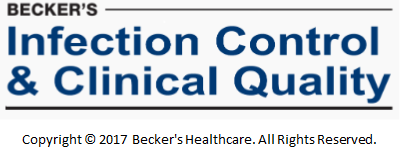
N.B. — This post is one in a series of ten, based on Becker’s Infection Control & Clinical Quality article 10 top patient safety issues for 2017 by Heather Punke & Brian Zimmerman and published on January 18, 2017 (http://patientsafetymovement.org/challenges-solutions/actionable-patient-safety-solutions-apss/).
“Vaccine coverage. Low adherence to immunization schedules resulted in outbreaks of preventable illnesses in 2016. Multiple mumps outbreaks brought cases of the resurgent virus to a 10-year high, according to the CDC. As of Dec. 3, 46 states and Washington, D.C., had reported 4,258 mumps cases combined.
Influenza is also largely preventable with a vaccine, but few Americans are vaccinated. Flu shots prevented an estimated 5 million illnesses and more than 70,000 hospitalizations in 2015, but the percentage of people inoculated against the potentially deadly virus remained low in 2016. Approximately two in five Americans received a flu shot this past year, which is comparable to the rate in 2015.
‘We have a tool that is proven to prevent flu illness and hospitalization but millions of people are not taking advantage of it. Too many people are unprotected,’ said Nancy Messonnier, MD, director of CDC’s [the USA Center for Disease Control and Prevention] National Center for Immunization and Respiratory Diseases.
Though misinformation surrounding vaccines remains abundant, the healthcare community must remain vigilant in educating patients and families about the protective power of vaccination in 2017.
To see the CDC’s immunization strategies for healthcare practices and providers, click here.”
The foregoing quote from the from the Becker’s Infection Control & Clinical Quality e-publication includes a reference to the CDC’s immunization strategies; the acronym used for this approach is AFIX:
“Assessment of the immunization coverage of public and private providers, Feedback of diagnostic information to improve service delivery, Incentives to motivate providers to change immunization practices or recognition of improved or high performance, and eXchange of information among providers …
The AFIX process consists of an assessment of an immunization provider’s coverage rates by a trained representative from the state or other immunization grantee program, feedback of the results of the assessment to provider staff, incentives to improve deficiencies and raise immunization rates, and exchange of information and ideas among healthcare providers. Some specific characteristics of this approach have made it one of the most effective for achieving high, sustainable vaccine coverage.
First, AFIX focuses on outcomes. It starts with an assessment, producing an estimate of immunization coverage levels in a provider’s office, and these data help to identify specific actions to take in order to remedy deficiencies. Outcomes are easily measurable. Second, AFIX focuses on providers, those who are key to increasing immunization rates. AFIX requires no governmental policy changes, nor does it attempt to persuade clients to be vaccinated, but instead focuses on changing healthcare provider behavior. Third, AFIX, when used successfully, is a unique blend of advanced technology and personal interaction.
Much of the AFIX process can be done electronically, increasing speed and accuracy of assessment and feedback and streamlining reporting. However, the personal skills of the assessor and that person’s ability to establish rapport with and motivate a provider are critical to achieving lasting results.” (https://www.cdc.gov/vaccines/pubs/pinkbook/strat.html).
In fact, “Much of the AFIX process can be done electronically, increasing speed and accuracy of assessment and feedback and streamlining reporting …” by using appropriate information technology (IT) for “… increasing speed and accuracy of assessment and feedback and streamlining reporting.” An IT solution compliant with the Cloud Healthcare Appliance Real-Time Solution as a Service Reference Architecture (CHARTSaaS RA) can automate AFIX.
Please validate this proposition to your own satisfaction by reviewing the details of these CHARTSaaS and CHARTSaaS RA presentations, and then by imagining a CHARTSaaS-enabled IT solution:
Healthcare providers and their patients will benefit significantly from appreciating and then applying a CHARTSaaS RA-compliant IT solution. To do so will mitigate medical mistakes (currently the third leading cause of patient deaths, per Makaray and Daniel, http://www.bmj.com/content/353/bmj.i2139), thereby minimizing patient adverse events; and also will optimize clinical case outcomes while maximizing the cost-effectiveness of care and treatment and accelerating the accrual of medical knowledge.
